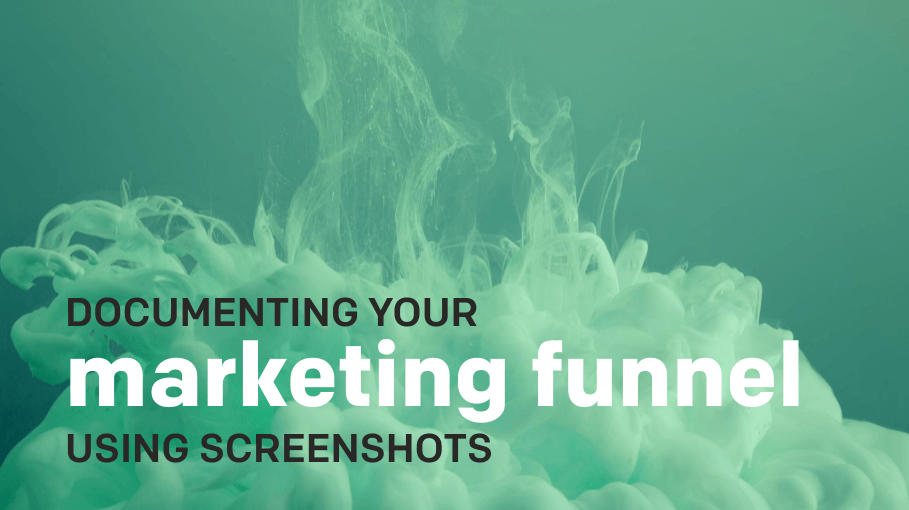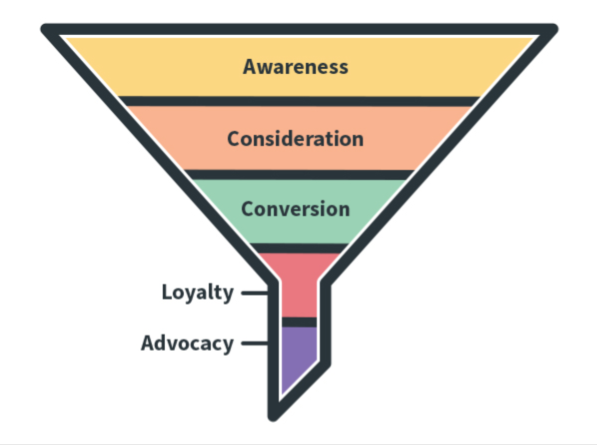Documenting your marketing funnel using screenshots
Keep track of your marketing funnel using Stillio's automated screenshots and make guided decisions on your next marketing campaigns.

There are many tools in marketing nowadays to guide us throughout our operations, both internally and with clients. But one of the most important ones, without a doubt, is the marketing funnel.
We plan our actions with our customer’s journey, dedicating different actions to each objective. However, monitoring them all at once can be very tough and time-consuming. Here are some actions you can apply to each step of your marketing funnel strategy while tracking them with a screenshot tool like Stillio.
What is the marketing funnel?
The marketing funnel is a visualization that helps us to understand the process of converting people who don’t know about your brand into potential customers. It starts with awareness and ends in conversion.

The visualization is in the shape of a funnel, giving it its name; there are few people when you go further down the steps. That is obvious because not everyone who sees your website will buy from you, and not everyone you know will hear about your site.
There are many versions of the marketing funnel- some have four steps, and others have 5 or 6 steps. But the general idea of the marketing funnel stages is the same and consists of the following steps:
- Awareness: This is where the public first hears about your brand and gets to know it a little.
- Interest/Consideration: After hearing about your brand, the public is interested in knowing more. They look for more information on you and your product, and can even start interacting with you. Now the person becomes a prospect.
- Intent/Conversion: This is a crucial phase. In the intent phase, the person shows the interest they want to buy from you. They might add your product to their cart on your site or sign up for a demo service. When their decision is made, they’ll complete the purchase, finally becoming a customer.
- Loyalty: Is the process over when the person buys? Not at all. The relationship with your customer goes much beyond that with post-sales services. You have to give them the best brand experience. That will make sure they will not only buy again but recommend your products to other people.
Let’s look at some marketing funnel ideas to get tangible results at each step of the way, showing how we can use website screenshots for marketing.
Actions for each step of the marketing funnel
1. Awareness
As mentioned earlier, the person has never heard of your brand or doesn’t know who you are in this phase. They don’t know what you do or sell. So how do you reach out to them? Here are a few ways:
- Work with influencers: Influencers have already built a strong army of followers, and if you locate the right influencers for your target, working together can help you reach people who have never heard of you. When you make a post in collaboration with an influencer, you can track audience engagement through automated screenshots. That will let you have a permanent record of comments and like count on the post, as well as the follower count for your account.
- Ads with awareness goals: Yes, you can set goals for every step of the funnel, but it’s always more challenging to get new clients. With an awareness campaign on display like Facebook, you can target people who haven’t heard of you or friends of people who know about your site. You can also run ads on a search platform like Google, so people can run into you when searching for a solution for their problems.
- Public relationships: Another great idea can be to send articles to the media. When you launch a new brand or when you’re looking to expand, you should send articles about yourself to the media to reach a bigger audience. Work with a copywriter to describe what you do, the problem you attend to, and your product. Then reach out to local or specialized new sites to publish it. You can track any mentions made by the media using Stillio to perform a press clipping.
2. Interest & Consideration
Now the person knows about you and your brand and may want to learn more. You want them to interact with you and start building a possible relationship.
- Generate content of value for them: These days, the first place people will look for you is on social media. So make sure that they find a profile full of valuable content when they search for you. That means not only content about your product, but tutorials, FAQs, behind the scene, and the list goes on!
- Encourage engagement: In the social media realm, you must start a conversation with the audience. You can do this by using each platform’s resources to ask questions and request feedback, like stories, tweets, DMs, Etc. You can use screenshots to have a permanent record of all your content and how people interact with it. With Stillio this task can be quickly automated, and you’ll save much time!
- SEO: You know people will be googling you immediately. So when they do, make sure you come up right on top. Many people will remember your product but not your name, and you don’t want competitors beating you here. Have a strong SEO strategy, provide valuable content for these interested customers, and track your SERPs with automated screenshots! This way, you will always have your SEO position at hand.
3. Intent & Conversion
Good news! The person has looked you up and is showing interest in your brand. They also wish to purchase from you. Now you need to drive that conversion.
- Discounts for signing up: As a last push to get them to click on the purchase button, you can ask them to sign up for your newsletter to get 10% off. That can be a double win because you get both a sale and a lead.
- If email marketing is part of your strategy, you’ll want to optimize your email bases to the max. ZeroBounce can help analyze and clean your database of spam and bots, as well as detecting the most active subscribers.
- A game on your website: Many brands add games like “spin the wheel” for users to get discounts. They spin it, and whatever it lands on, they get a code for that offer.
- Offer a free trial or demo: Who doesn’t love freebies? If someone is truly thinking about purchasing your service, an on-hand experience can be defining. A pop-up or a banner on your site offering a demo can be attractive.
For these ideas, you can use screenshots to check if pop-ups are showing up correctly. In addition, if you make changes to the way you present these offers and want to compare different versions, it’s good to keep an archive of your website. You can also set automated screenshots of competitors to see what conversion actions they’re doing on their sites.
4. Loyalty
Congratulations, you now have a new customer! If you want them to stick around, try these strategies.
- Special offers: Through email marketing, you can persuade customers to make more purchases. Please give them a discount on their next purchase as a thank you for the first. Or give them a free item after a certain number of purchases.
- Encouraging referrals: Many services like Cabify offer a discount for passengers that get their friends to register on the app. You can do this through a referral link.
As we mentioned in the previous title, you can set screenshots on competitor sites to track what loyalty actions they’re using.
- Invite them to share their experience on social media: Create brand experience by inviting users to upload their pictures or videos of them wearing or using your products. Always remember to ask them to tag you or to use a hashtag so you can locate them later (and track this activity with automated screenshots!).
You can track purchase activity sourced from your loyalty efforts by building a data dashboard that you can record with automated screenshots.
Conclusion
See how vast marketing funnel activities can be? The digital marketing funnel requires a lot of different actions. However, the good thing is that you have screenshots to help you out.